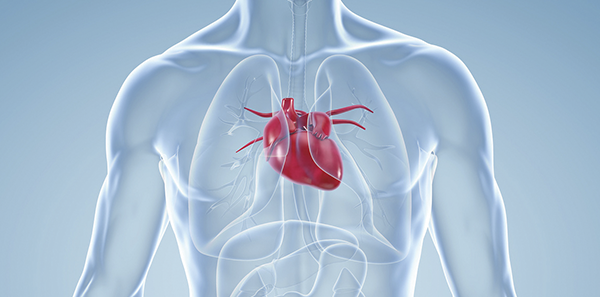
Description
Ischemic cardiopathology is a heart disease caused by a lack of blood supply to the heart.
The heart is irrigated and nurtured through the coronary arteries. A total or partial blockage in these arteries produces a deficit in the supply of oxygen and nutrients to the heart muscle as well as a defect in the removal of waste substances produced during cellular metabolism of cardiac areas cut off by the obstruction.
Causes
Heart failure is the result of imbalance between coronary supply and oxygen demand of the heart muscle.
The most common cause of heart failure is the obstruction of the coronary arteries by deposits of fatty material (atheroma) and fibrous material (sclerosis) in the inner layer of these arteries. This is called atherosclerosis.
Coronary thrombosis is the formation of a blood clot in the artery wall and is usually formed on atherosclerotic plaques, favoring artery blockage.
Another less common cause is coronary spasm which consists of a localized decrease in the artery’s diameter. It often occurs on an atherosclerotic plaque. Inhaling cocaine can cause a coronary spasm; it also determines an increase in blood pressure and heart rate. Thus, cocaine may cause ischemia and even myocardial necrosis.
Risk factors
- Diabetes M.
- Cholesterol.
- Hypertension.
- Tobacco smoking.
- Abdominal obesity.
- Stress.
- Heart rate.
- Inadequate physical exercise.
- Age.
- Diet. Poor diet.
- Gender.
- Race.
- Stimulant drugs (cocaine …).
- Family history.
- Flu.
Consequences and clinical picture of myocardial ischemia
In the first few seconds after the cessation of blood flow, oxygen is depleted and chemical and biological cell reactions become anaerobic (without oxygen) and substances that stimulate nerve endings are released causing the characteristic chest pain. At the same time, the elastic properties of the cardiac muscle are altered and electrographic changes appear.
After a period of transient ischemia, the myocardium recovers and undergoes an adaptation phenomenon that makes it more resistant to a new ischemic event.
When the reduction of coronary flow is maintained chronically, the ischemic area’s ability to contract can be strongly reduced, although it maintains the ability to normalize when the coronary blood flow is restored. However, the decrease in coronary flow can be so deep that it determines cell death or myocardial necrosis.
Another consequence of ischemia is the alteration of the electrical properties of heart cells. This electrical disturbance will often cause cardiac arrhythmias (disturbance of the regular heart rhythm) that can be fatal.
Coronary heart disease can start with angina pectoris, which is the initial presentation in approximately 45% of patients, with myocardial infarction in 42% or sudden death in 13%.
Dr. Juan Antonio Andreo Ramírez – ASSSA Medical Manager
The information published in this media neither substitutes nor complements in any way the direct supervision of a doctor, his diagnosis or the treatment that he may prescribe. It should also not be used for self-diagnosis.
The exclusive responsibility for the use of this service lies with the reader.
ASSSA advises you to always consult your doctor about any issue concerning your health.












